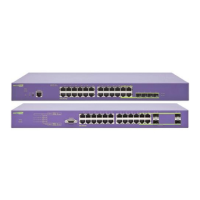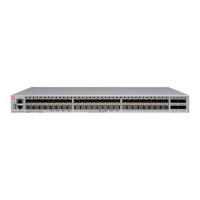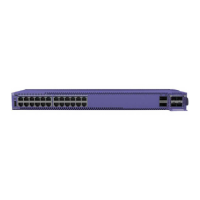Appendix B: Trap List
Extreme Networks EAS 100-24t Switch CLI Manual
318
linkUp
1.3.6.1.6.3.1.1.5.4
ifIndex,
ifAdminStatus,
ifOperStatus
V2 A linkUp trap signifies that
the SNMP entity, acting in an
agent role, has detected that
the ifOperStatus object for
one of its communication
links left the down state and
transitioned into some other
state (but not into the
notPresent state). This other
state is indicated by the
included value of
ifOperStatus.
RFC2863
(IF-MIB)
newRoot
1.3.6.1.2.1.17.0.1
None V2 The newRoot trap indicates
that the sending agent
has become the new root of
the Spanning Tree; the
trap is sent by a bridge soon
after its election as the new
root, e.g., upon expiration of
the Topology Change Timer
immediately subsequent to its
election. Implementation of
this trap is optional.
RFC1493
(BRIDGE-MIB)
topologyChange
1.3.6.1.2.1.17.0.2
None V2 A topologyChange trap is
sent by a bridge when
any of its configured ports
transitions from the Learning
state to the Forwarding state,
or from the Forwarding state
to the Blocking state. The
trap is not sent if a newRoot
trap is sent for the same
transition. Implementation of
this trap is optional.
RFC1493
(BRIDGE-MIB)
risingAlarm
1.3.6.1.2.1.16.0.1
alarmIndex,
alarmVariable,
alarmSampleType,
alarmValue,
alarmRisingThreshold
V2 The SNMP trap that is
generated when an alarm
entry crosses its rising
threshold and generates
an event that is configured
for sending SNMP
traps.
RFC2819
(RMON-MIB)
fallingAlarm
1.3.6.1.2.1.16.0.2
alarmIndex,
alarmVariable,
alarmSampleType,
alarmValue,
alarmFallingThreshold
V2 The SNMP trap that is
generated when an alarm
entry crosses its falling
threshold and generates
an event that is configured
for sending SNMP
traps.
RFC2819
(RMON-MIB)
Trap Name/OID Variable Bind Format Description MIB Name

